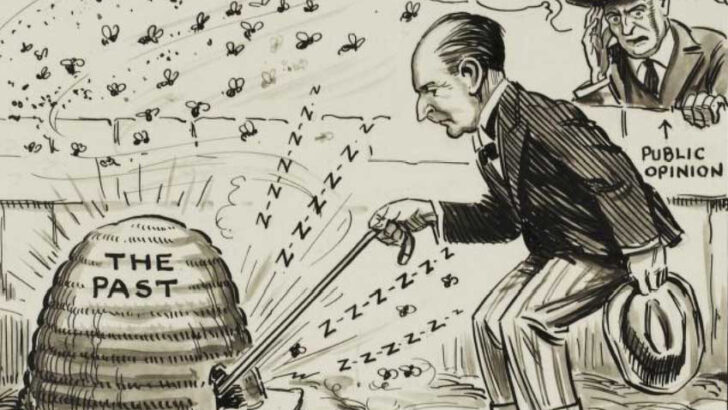Gordon Brewster and his Cartoons, by Pól Ó Duibhir
(Lettertec, Springhill House, Carrigtwohill, Co. Cork, T45 NX81; selfpublish@lettertec.com; (021) 488 3370, or (01) 679 5844)
This book is a labour of love. At the outset the author reveals how he first became aware of the existence of Gordon Brewster.
Under a picture of Howth village from the Sutton end he continues: “Along the road on the right-hand side is a shop called The Gem, which sells newspapers, sweets and suchlike.
“On the 16th of June 1946, a man entered the shop. He came from Sutton expressly to buy sweets for his teenage children. While dealing with the shopkeeper behind the counter, he had a massive heart attack and died on the spot. The shopkeeper rushed around from behind the counter and said an act of contrition in his ear.
“The man was Gordon Brewster, and the shopkeeper was my mother”.
Gordon Brewster was born in Dublin in 1889. He trained as an artist in the Dublin Metropolitan School of Art. On graduating he secured an appointment as chief artist at Independent Newspapers. His main duty was to provide cartoons for the company’s newspapers, chiefly for the Weekend Herald and the Sunday Independent. These were then the leading newspapers in the state.
Survived
Gordon insisted on having his art work returned when the papers had finished with it. Hence the large number of his cartoons that have survived. Those listed in this book were handed in to the National Library of Ireland anonymously.
Pól’s friend, Felix Larkin, the historian, informed him that the National Library had this collection of over four hundred originals of Gordon’s cartoons and arranged for him to view them. Pól was enchanted by them and there and then determined “to write to honour this wonderful man!”
Pól provides a scholarly account of the cartoons. They are numbered, classified, appraised and many of them are reproduced. The caricatures, where the subject is the target of some gentle barbs, are divided into Irish Free State, Britain, Northern Ireland and Overseas. Under the Irish Free State, WT Cosgrave features in 21. Ernest Blythe in eight, Éamon de Valera in five and Kevin O’Higgins in three. Under Overseas there is one of Mussolini and one of Hitler.
Sadly, one of his cartoons on Kevin O’Higgins was prophetic. He had the Minister for Justice poking a beehive with his walking-stick and the cartoon was headed ‘Be careful Kevin’. O’Higgins was most unpopular with those who opposed the Anglo-Irish Treaty and were defeated in the Civil War. And he was regarded not only by his political opponents but by many others to be ruthless. In the end he was shot dead by gunmen on his way to Mass one Sunday morning in 1927.
Gentle
In general the barbs in Gordon’s cartoons were quite gentle. Not so, however, those on Northern Ireland. He detested the place. It was, it seems, a feeling reciprocated by the authorities in the northern State. On one occasion when he was in Belfast he was kidnapped by members of the RUC and dumped south of the border.
There were 16 cartoons on Craigavon (James Craig), the Northern Ireland Prime Minister. The most vicious one shows him holding a gun on a lady representing the Catholic minority in the northern State. It is emblematic of the abuse heaped on Northern Catholics during the first half-century of Northern Ireland’s existence.
Gordon was also a painter of consequence. He exhibited in the Royal Hibernian Academy’s Annual Exhibitions. However, only a few of his pictures have survived. The rest were lost as a result of a bitter dispute between him and his estranged wife.


 Stirring up the bee hive by Gordon Brewster.
Stirring up the bee hive by Gordon Brewster.